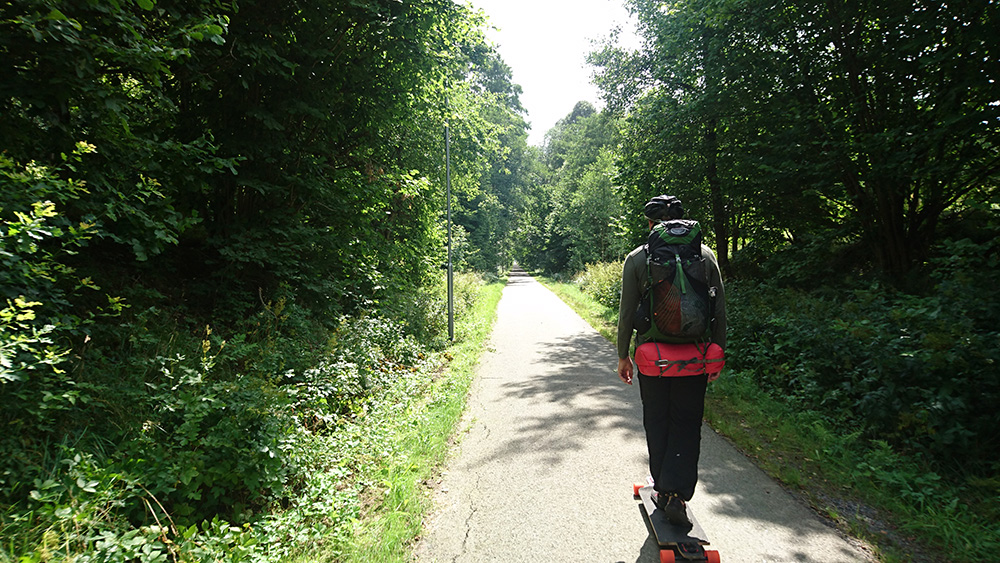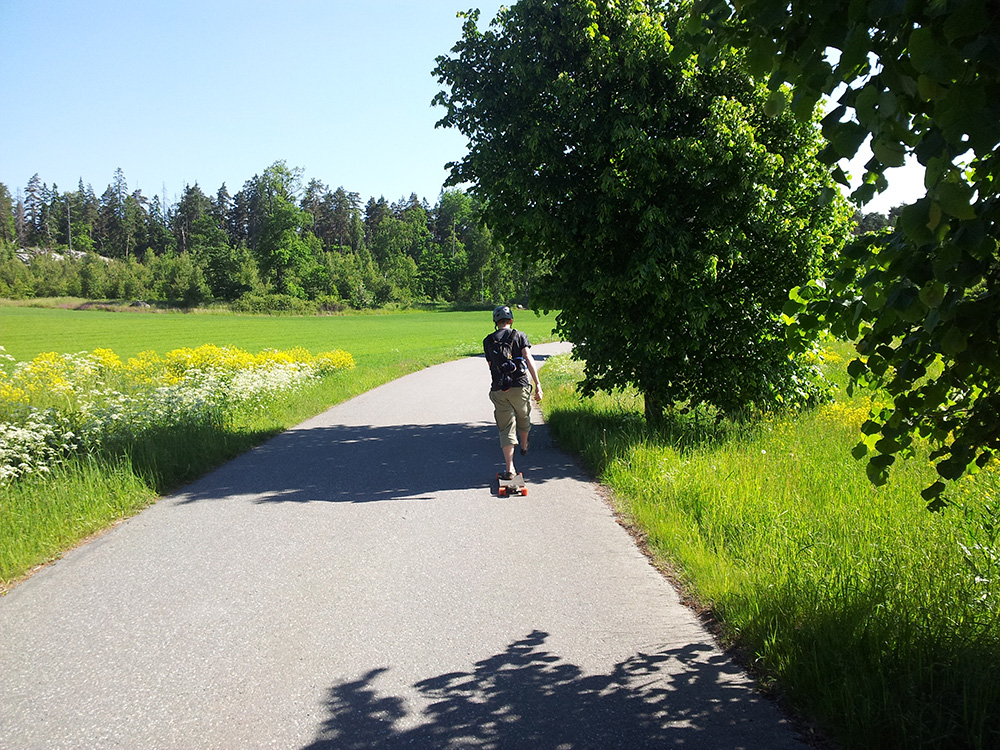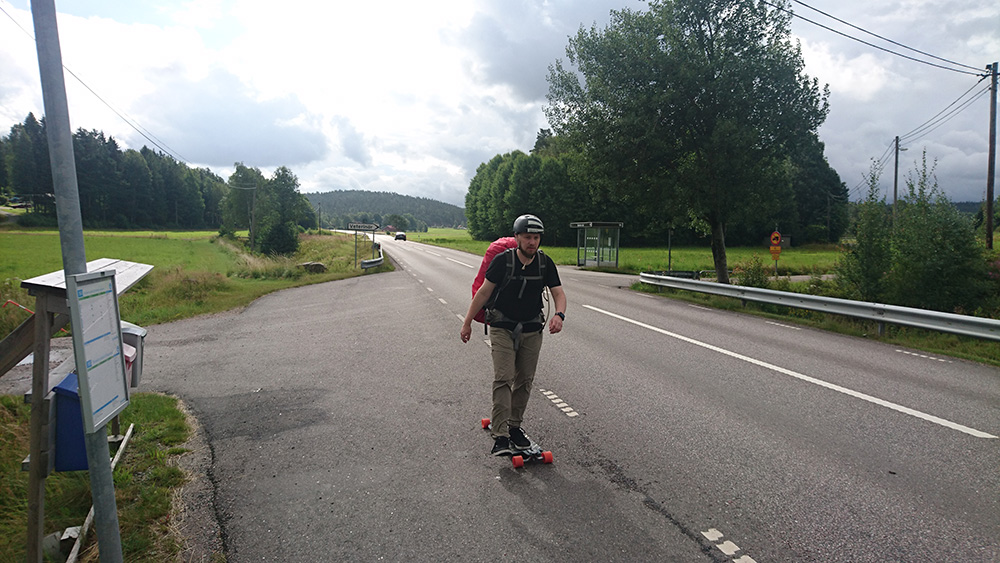Ok, since the last post you’re now a longboard hotshot right? You got the basics down and ready to get some distance going. But where do you go? Lets break down my process for figuring out the trail.
Where to?
First off, how long are you willing to go? Don’t go too crazy for your first few times; the first couple of trips I pushed myself too far which made the trip painful and not very enjoyable. Figure out your limits by starting with day trips at around 20-30km.
I find it more fun riding when I have a specific location that I’m aiming for so find something that is approximately that distance; like a small town, a landmark or a store. As mentioned in the last post, it takes me about 35-40 minutes per 10km with no pack and slightly over an hour with a heavy backpack.
Obviously any path you take must be asphalt. You can some ride hard packed gravel if you must but it’s not recommended. Freeways are obviously off limits (here in Sweden anyway) and you should absolutely avoid 2+1 roads (mostly only found in Sweden).
You do not want to ride on the narrow shoulder of a 2+1 road with cars screaming past you at 100km/h. It’s hard to know if a road has a 2+1 segment but from my very un-scientific research (ie, trial and error) I’ve found that roads with numbers higher than 100 usually don’t have 2+1 segments.
To help me plan my route I often use Google Maps, just make sure to switch to bike or walking directions to get better results. Google Street View is also a good way of checking out the roads before you ride them. Just check out a few spots on each longer road to see if it has asphalt and roughly the quality of it.
But no matter how much you plan, you will stumble upon issues and you will have to improvise and you might have to walk a bit. I’ve found that when map services fail or are out of date then tourist-information kiosks can be a great help for figuring out what roads to take for the next leg of your journey. They were a great help on the Gothenburg trip when we discovered that the planned route had large segments of 2+1 road.
Theory into practise
So now that you’ve figured out a path to take, lets get into some tips on riding the road. I’ll get into what gear to use in a later post but for now, just make sure you got your board, comfortable shoes, helmet and water. Seriously, bring a bunch of water; don’t get dehydrated. A hydrationsystem (like Camelbak) is great but a few waterbottles work too.
When riding try to stay close to the edge of the road while still being comfortable enough to not fall off the road just because you wobbled a little. I’d say a boards width or so of space. Riding on the drawn line works if it’s worn out enough to not be protruding. Sometimes the asphalt can be much better in the car tracks and depending on the amount of traffic I sometime ride there and return to the edge when I see a car coming. Really keep an eye out for traffic though when doing that.
As I mentioned in the last post most vehicles give you extra space when passing but be careful of the tailwind of big semi trucks. They can give you a surprising push when you least expect it (ie, standing on one leg when pushing). And always be courteous on the road. Use your arms to indicate turns just as bicyclists do.
If you’re going to take just one warning with you from this post then it should be:
Be aware the danger of downhill
My biggest fears when going at high speeds are threefold: crossroads/T-junctions, unexpected gaps and construction on the road. By unexpected gaps I mean for example the gap that some bridges have when transitioning from road to bridge.
When you don’t know the road already you have no idea what’s coming up just around the corner, forcing you to unexpectedly break hard at high speed which is risky. So be very careful and alert, it might be worth going down a hill slowly when uncertain. This is how you’ll most easily hurt yourself otherwise.
You can sometimes keep your speed down by riding on grass next to the pavement but make sure to practise first and don’t use it as an emergency break at high speeds.
That follows into another point. Bikepaths are great and you should absolutely use them. But they sometimes have a tendency at crossroads to stop with a sharp curb, something you do not want to experience when going downhill. It might be worth riding on the road instead. Once again, just be careful.
Instead of foot breaking on long hills, burning away lots of shoe rubber, I often do push breaking. And by that I mean do a short step and use your leg to try to slow down, like pushing in reverse. It’s a tradeoff of course between the longevity of your shoes and using up the energy in your legs so it depends on your energy-levels and shoes.
Phew, that was more tips than I thought it’d be. Hopefully now with all this information in your head you should be able to start doing your own longdistance trips. Next post I’ll go into more nerdy detail about my gear.


